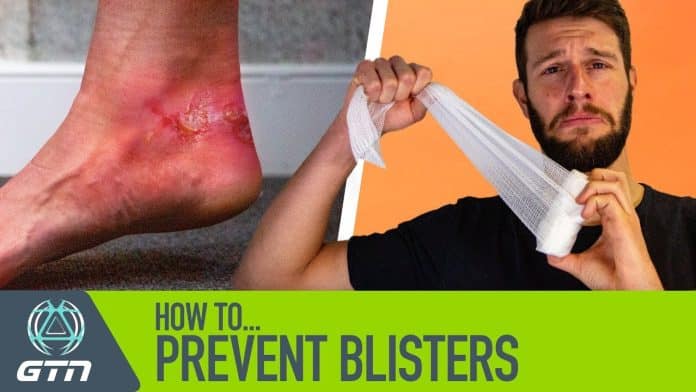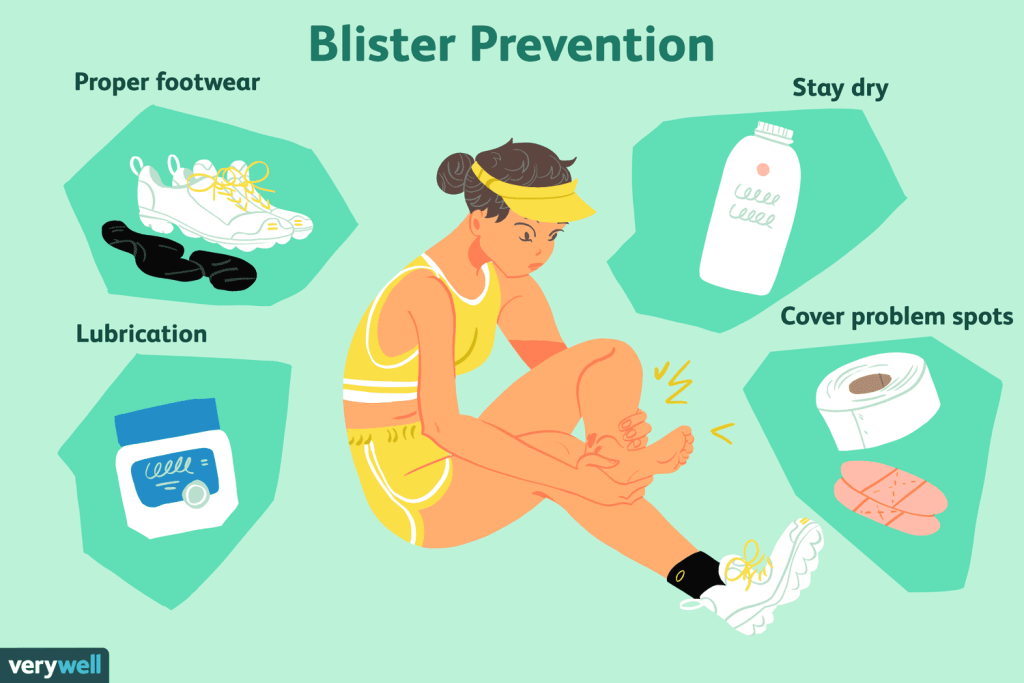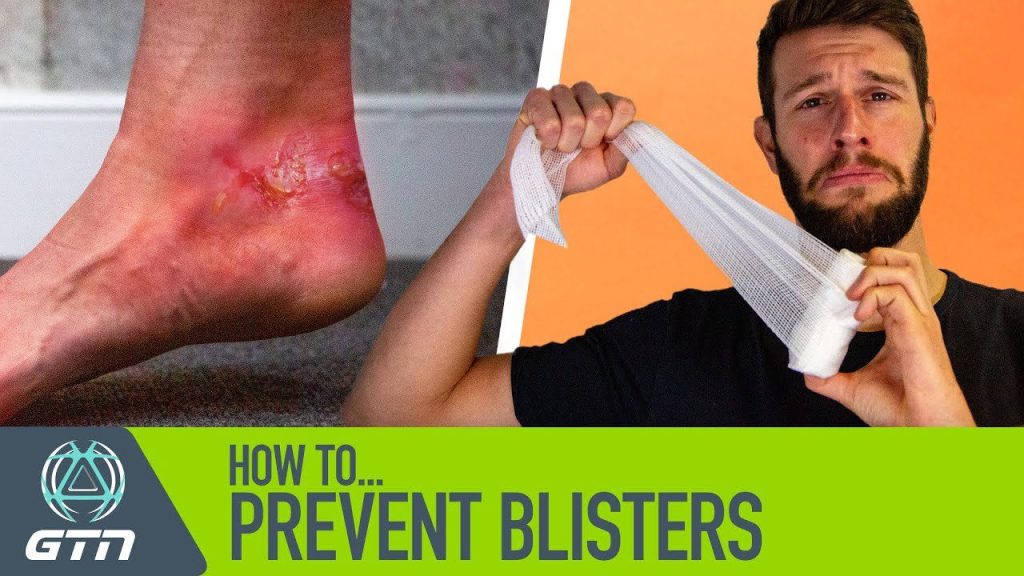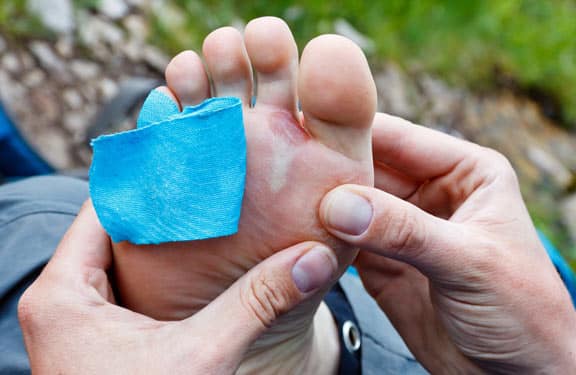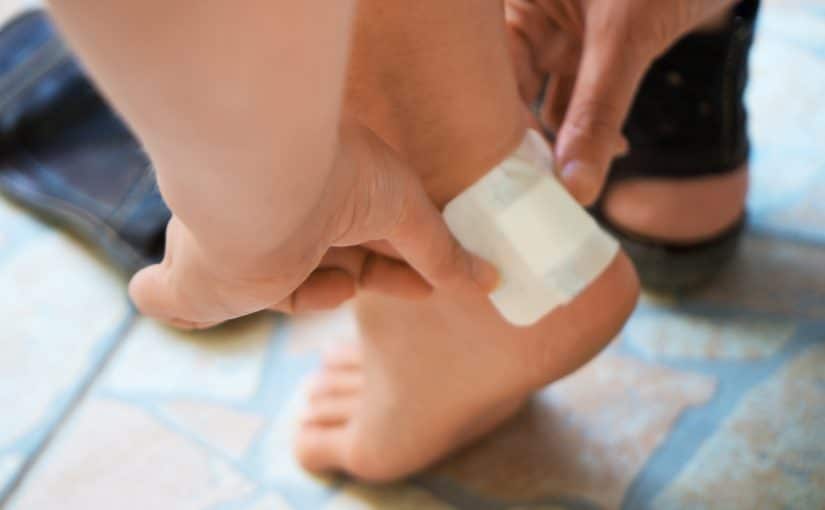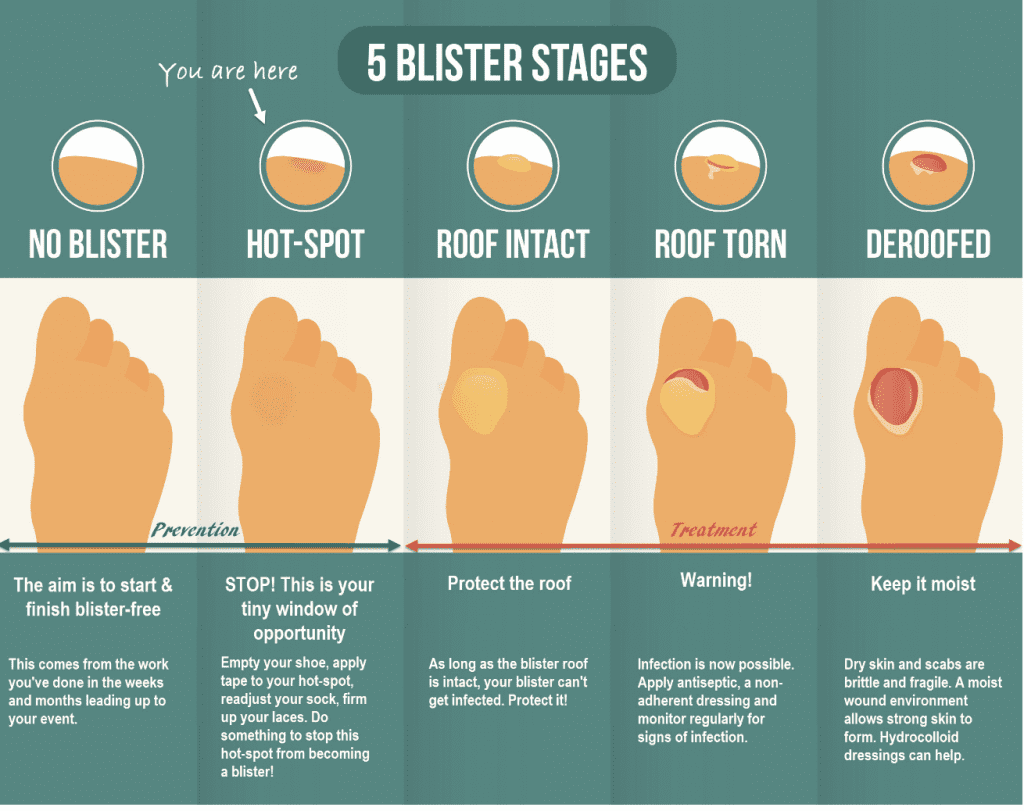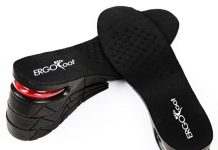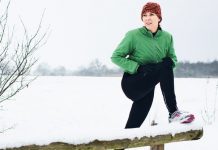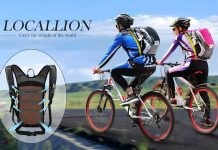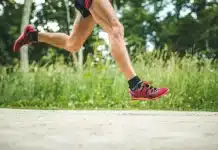Running is a fantastic way to stay active and maintain a healthy lifestyle, but the last thing you want is to be sidelined by painful blisters.
These annoying nuisances can quickly occur while pounding the pavement, leaving you with discomfort and a potential setback in your training.
So, how can you ensure that blisters don’t spoil your running endeavors?
In this article, we’ll explore practical tips and strategies to help you prevent blisters while running, allowing you to enjoy your workouts easily and confidently.
Choose the Right Footwear
Wear Proper Running Shoes
When it comes to preventing blisters while running, the first step is to make sure you are wearing the right shoes. Investing in a good pair of running shoes can make a world of difference in your comfort and ultimately prevent blisters.
Running shoes are specifically designed to provide cushioning and support to your feet, reducing friction and pressure points that can lead to blisters. Unlike regular sneakers, running shoes have features such as shock absorption, arch support, and breathable materials that keep your feet cool and dry.
Ensure a Good Fit
In addition to wearing proper running shoes, it is crucial to ensure they fit you well. Ill-fitting shoes can cause friction and rubbing, leading to painful blisters.
To find the perfect fit, visit a specialized running store where experts can measure your feet, assess your gait, and recommend the right size and type of running shoes.
Remember that everyone’s feet are different, so what works for someone else may not work for you. Take the time to try on different pairs, walk around, and even jog a bit to make sure the shoes feel comfortable before making a purchase.
Consider Different Brands and Styles
While there are many popular running shoe brands, it’s essential to consider that each brand offers different styles and models. Experimenting with different brands and styles can help you find what works best for your feet.
Some people have high arches, while others have flat feet or certain foot conditions. By exploring different options, you increase your chances of finding shoes that provide the proper support and protection for your needs.
Use Moisture-Wicking Socks
Wear Breathable Socks
Socks might seem like an afterthought when it comes to preventing blisters, but they play a significant role in keeping your feet dry and comfortable. Opt for breathable socks made of moisture-wicking materials that allow air circulation and help sweat evaporate quickly.
This not only helps reduce the risk of blisters but also minimizes foot odor and the growth of bacteria. Look for socks specifically designed for running, as they are typically made with performance fabrics that provide the desired breathability and moisture management you need.
Avoid Cotton Socks
Cotton socks may feel soft and cozy, but they are not ideal for running. Cotton is notorious for retaining moisture, and when your feet sweat, the moisture gets trapped, creating a damp environment that can lead to blisters.
Instead, choose synthetic or merino wool socks, which are known for their moisture-wicking properties. These materials draw moisture away from your skin, keeping your feet dry and reducing the friction that leads to blisters.
Try Synthetic or Merino Wool Socks
Synthetic socks, made from materials such as nylon or polyester, are great options for managing moisture and preventing blisters. They are lightweight, quick-drying, and offer excellent breathability.
Merino wool socks, on the other hand, provide natural moisture-wicking properties and help regulate temperature, keeping your feet cool in the summer and warm in the winter. Both synthetic and merino wool socks are widely available in various thicknesses and styles, allowing you to find the perfect pair for your running needs.
Break in Your Shoes Gradually
Start with Shorter Runs
New running shoes can feel stiff and uncomfortable at first, which is why it’s essential to break them in gradually. Instead of jumping into long runs right away, start with shorter distances to allow your shoes to mold to your feet and your feet to adjust to the shoes.
This will allow your shoes to stretch and conform to your foot’s shape, preventing unnecessary rubbing and friction that can lead to blisters. Gradually increasing the distance and intensity of your runs will also give your feet time to adapt to the new footwear, reducing the risk of blisters.
Increase Distance Gradually
Once you’ve broken in your new running shoes with shorter runs, gradually increase your distance. Pushing yourself too hard or too fast can result in blisters, muscle soreness, and other injuries.
Increase your mileage slowly and listen to your body. If you feel any discomfort or pain, it may be a sign that you need more time to adjust to the increased distance. Pay attention to any hot spots or areas that feel irritated and adjust your running routine accordingly.
Listen to Your Feet
Throughout the adjustment period and whenever you’re running, it’s crucial to listen to your feet. Your feet will tell you if something is uncomfortable or causing friction.
If you start to feel pain, discomfort, or the beginnings of a blister, stop running and address the issue.
Ignoring these warning signs can lead to more significant problems down the road. Take the time to assess your shoes, socks, and running form to identify any potential causes of discomfort and make the necessary adjustments.
Wear Socks with Padding or Cushioning
Choose Thick or Double-Layered Socks
If you are prone to blisters or have sensitive feet, consider wearing socks with extra padding or cushioning.
Thick or double-layered socks provide an additional layer of protection between your feet and your shoes, reducing friction and absorbing shock.
The added cushioning can help prevent blisters, especially in areas where your feet are more susceptible, such as the heel or ball of the foot. These socks are readily available in sports stores and online retailers, so you can easily find a pair that suits your needs.
Look for Socks with Extra Padding
Some socks are specifically designed with extra padding in the areas prone to blisters. These socks often have strategically placed cushioning in the heel, toe, and foot ball to provide targeted protection.
Look for socks with reinforced areas or padding made from materials like gel or foam. These features can significantly decrease the friction and pressure that can lead to painful blisters and allow you to run comfortably for longer distances.
Invest in Specific Running Socks
While well-fitting, moisture-wicking, and cushioned socks can help prevent blisters, inginvesting in socks specifically designed for running can provide added benefits.
Running socks are often made with advanced materials with moisture control, breathability, and blister prevention technology.
They are typically designed to fit snugly and maintain their shape and cushioning even after extended use. Investing in high-quality running socks can be a game-changer in preventing blisters and improving overall comfort during your runs.
Apply Lubrication or Anti-Chafing Products
Use Vaseline or Petroleum Jelly
Lubrication is a simple yet effective way to reduce friction and prevent blisters. Applying a thin layer of Vaseline or petroleum jelly to areas prone to blisters, such as the toes or heels, creates a protective barrier between your skin and your shoes.
This reduces the friction and rubbing that can lead to blisters, allowing for a more comfortable running experience. Make sure to apply the lubricant generously but not excessively, as you want to create a barrier without creating a slippery environment inside your shoes.
Try Anti-Chafing Balms or Powders
If you prefer non-greasy alternatives to petroleum-based lubricants, several anti-chafing balms and powders are available specifically for runners. These products are designed to create a protective layer on your skin, reducing friction and preventing blisters.
Anti-chafing balms usually come in stick form, making them easy to apply and carry with you on your runs. Powders, on the other hand, are great for absorbing moisture and reducing friction. Experiment with different products to find the one that works best for you and your skin type.
Apply Before Every Run
To reap the benefits of lubrication or anti-chafing products, make sure to apply them before every run. Even if you don’t experience discomfort or friction during shorter runs, applying these products as a preemptive measure can help prevent blisters from forming during more prolonged or intense runs.
Remember that prevention is critical; taking a few extra minutes to apply these products can save you from painful blisters and potential downtime from running.
Keep Your Feet Dry
Avoid Running in Wet Shoes or Socks
Running with wet shoes or socks can significantly increase the risk of blisters. Moisture softens the skin and makes it more susceptible to friction and rubbing. Avoid running in wet conditions whenever possible and try to keep your shoes and socks dry.
If you get caught in the rain or step in a puddle, dry your feet and change into dry socks as soon as possible. If you frequently run in wet conditions, you may even consider investing in waterproof or water-resistant running shoes.
Use Moisture-Absorbing Products
You can use moisture-absorbing products such as foot powder or specialized moisture-wicking inserts to keep your feet dry during your runs. Foot powders help absorb excess sweat and moisture, preventing friction and reducing the risk of blisters.
Some powders also have antibacterial properties that address foot odor and fungal infections. On the other hand, moisture-wicking inserts can be placed directly in your shoes and help pull moisture away from your feet, keeping them dry and comfortable.
Dry Your Feet Thoroughly After Running
Once you finish your run, take the time to dry your feet thoroughly. Use a clean or paper towel to remove moisture, paying extra attention to the areas between your toes. Leaving your feet damp after running can create a breeding ground for bacteria and increase the chances of blisters.
After drying, allow your shoes and socks to air out and fully dry before your next run. This will help maintain their integrity and prevent the buildup of sweat and bacteria that can lead to blisters and foot-related issues.
Protect Problem Areas
Cover Prone Areas with Blister Pads or Bandages
If you have specific areas on your feet prone to blisters, such as the back of your heels or the sides of your toes, consider using blister pads or bandages.
These adhesive patches create additional protection and cushioning, reducing the friction and pressure that lead to blisters. Look for blister pads made from gel or foam materials, which are often the most effective and comfortable. Apply the pads correctly and securely to stay in place during your runs.
Use Moleskin or Taping Techniques
Another effective way to protect problem areas is by using moleskin or taping techniques. Moleskin is a soft, padded material that can be cut to fit any part of your foot and secured with adhesive.
It provides extra cushioning and reduces friction where blisters tend to occur. On the other hand, tap techniques involve using sports or medical tape to create a barrier between the skin and the shoe, preventing rubbing and blister formation. Many athletes and runners succeed with these methods, so don’t hesitate to try them.
Apply Talcum Powder to Reduce Friction
Talcum powder, commonly used as baby powder, can be a valuable tool in preventing blisters. It helps reduce friction and absorbs excess moisture, creating a dry and smooth environment that minimizes the risk of blisters.
Before putting on your socks and shoes, sprinkle a small amount of talcum powder on your feet, paying extra attention to areas prone to friction. The powder will provide a protective layer, allowing your feet to move more freely and reducing the chances of blisters forming.
Improve Your Running Form
Focus on Proper Foot Strike
Proper running form plays a crucial role in preventing blisters. Striking the ground correctly helps distribute the impact forces evenly and prevents excessive pressure on specific areas of your feet. Aim for a midfoot strike, where your foot makes contact with the ground with the middle part of your foot.
Avoid landing on your heels or toes, as these landing patterns can increase friction and lead to blisters. Practicing and maintaining a proper foot strike technique prevents blisters and can enhance your overall running efficiency.
Avoid Overstriding
Overstriding, or taking long strides, can be a common mistake many runners make. When you overstride, your foot lands too far ahead of your body, resulting in increased ground impact and a higher risk of blisters.
To avoid overstriding, focus on increasing your cadence or step rate. Aim for around 180 steps per minute, as a higher cadence encourages smaller, quicker strides that minimize the time your feet spend in contact with the ground. This reduces the likelihood of friction and decreases the potential for blisters.
Consider Gait Analysis
For more precise guidance on form improvement, consider undergoing a gait analysis. Gait analysis involves observing your running mechanics and foot strike pattern to identify irregularities or imbalances.
By understanding your unique gait, you can work with a professional to correct issues, such as overpronation or supination, which can contribute to blister formation. Gait analysis can be done at specialized running stores or by sports medicine professionals, providing valuable insights and recommendations for improving your form and reducing the risk of blisters.
Consider Using Insoles or Orthotics
Get Professionally Fitted Insoles
Insoles, also known as shoe inserts or footbeds, can provide additional support, cushioning, and alignment correction. Getting professionally fitted insoles can help distribute pressure more evenly on your feet and reduce friction, ultimately preventing blisters.
A podiatrist or specialized running store expert can assess your feet and recommend the correct type of insole for your foot structure and running style. These insoles can significantly improve your running experience while minimizing the risk of blisters by providing customized arch support, cushioning, and stability.
Try Custom Orthotics
If you have specific foot conditions that require more advanced support, custom orthotics may be the solution for you. Custom orthotics are specially designed inserts made to fit your feet perfectly.
A podiatrist or orthopedic specialist typically prescribes these inserts and can address various foot issues, such as flat feet, high arches, or pronation abnormalities. By aligning your feet and providing tailored support, custom orthotics can help prevent blisters by reducing the friction and pressure that can lead to their formation.
Address Specific Foot Conditions
If you have pre-existing foot conditions, such as bunions or calluses, addressing them adequately to prevent blisters while running is essential. Consult with a healthcare professional, such as a podiatrist, who can provide expert advice and treatment options for your condition.
They may recommend specific shoes, orthotics, padding, or other interventions that can alleviate discomfort, redistribute pressure, and minimize the risk of blisters. By addressing your foot conditions, you can maintain an active running lifestyle while minimizing the chances of discomfort and painful blisters.
Allow Time for Recovery
Take Rest Days Between Runs
Rest days are an integral part of any training plan and play a crucial role in preventing blisters. Giving your feet time to recover and heal is just as important as the actual running.
Running too frequently without adequate rest can lead to fatigue, increased friction, and a higher risk of blisters. Incorporate rest days into your training schedule and treat them as essential to your overall running routine. It’s during these rest periods that your body repairs and strengthens itself, reducing the likelihood of overuse injuries and blisters.
Listen to Your Body’s Signals
While it’s essential to stick to a training plan, listening to your body’s signals is equally essential. If your feet feel excessively sore or notice any unusual discomfort, it may be a sign that you need additional rest. Pushing through pain or fatigue can exacerbate existing blisters, create new ones, and lead to more severe injuries.
Pay attention to any warning signs your body gives you, and be willing to adjust your training accordingly. Remember, your long-term goal should be to enjoy running without compromising your foot health.
Manage Inflammation and Heel Pain
Inflammation and heel pain can be common issues among runners and can contribute to blister formation. If you experience inflammation, particularly in the heel area, managing it effectively to prevent further complications is essential. Rest, ice, compression, and elevation (RICE) can help reduce inflammation and relieve pain.
Applying an ice pack or cold compress to the affected area for 15-20 minutes several times daily can help reduce swelling. Using compression socks or bandages can also improve blood circulation and decrease inflammation. If your heel pain persists or worsens, it’s recommended to consult with a healthcare professional for proper assessment and treatment.
In conclusion, preventing blisters while running requires careful attention to various factors, starting with choosing the proper footwear and wearing moisture-wicking socks. Gradually breaking in your shoes, using socks with padding, applying lubrication or anti-chafing products, and keeping your feet dry are all essential steps to minimize friction and reduce the risk of blisters.
Protecting problem areas, improving your running form, considering insoles or orthotics, and allowing time for recovery are additional measures that can contribute to a blister-free running experience. By implementing these strategies into your running routine, you’ll be able to enjoy the sport without being sidelined by painful blisters.

